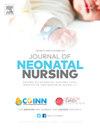Construction of a formula for predicting the length of oral and gastric tube insertion locations based on the body weight in premature neonates
Q2 Nursing
引用次数: 0
Abstract
Objective
To establish a weight-based formula for estimating the depth of oral gastric tube in premature neonates.
Methods
From November 2021 to March 2023, premature infants who required clinical gastric tube placement and underwent chest X-ray examination were enrolled in this study. The nurses used the distance from the tip of the nose to the earlobe to estimate the length of the oral gastric tube. The length of the tube and the body weight of the infant on that day were recorded. Based on the results of the chest X-ray, the position of the oral gastric tube placement was determined and the ideal length of placement was calculated, which was used as the dependent variable, and the infant's weight was used as the only independent variable to establish a regression equation and construct the formula.
Results
A total of 504 eligible premature neonates were selected for analysis. The statistical formula for measuring the depth of the gastric tube placement, based on the body weight, was as follows: length of oral gastric tube (cm) = (0.003 ± 0.20) × weight (g) + (10.47 ± 0.20), R2 = 0.541, P < 0.001. There was no significant difference in the accuracy rate between the formula method and the body surface measurement method of the “tip of nose-earlobe-xiphoid process”.
Conclusion
The formula for estimating the length of oral gastric tube placement based on weight has a certain degree of accuracy and can be used in premature neonates in the clinical setting.
基于早产儿体重预测口胃管插入位置长度的公式构建
目的建立基于体重的早产儿口服胃管深度估算公式。方法于2021年11月至2023年3月,选取临床需要置胃管并行胸部x线检查的早产儿为研究对象。护士用鼻尖到耳垂的距离来估计口腔胃管的长度。记录当日插管长度及婴儿体重。根据胸部x线检查结果,确定口腔胃管放置位置并计算理想放置长度,以其为因变量,以婴儿体重为唯一自变量,建立回归方程并构建公式。结果共选取符合条件的早产儿504例进行分析。根据体重测量胃管放置深度的统计公式为:口服胃管长度(cm) =(0.003±0.20)×体重(g) +(10.47±0.20),R2 = 0.541, P <;0.001. 公式法与“鼻尖-耳垂-剑突”体表测量法准确率无显著差异。结论基于体重估算口腔胃管放置长度的公式具有一定的准确性,可用于早产儿临床。
本文章由计算机程序翻译,如有差异,请以英文原文为准。
求助全文
约1分钟内获得全文
求助全文
来源期刊

Journal of Neonatal Nursing
Nursing-Pediatrics
CiteScore
2.00
自引率
0.00%
发文量
143
期刊介绍:
Aims & Scope: This is the practical, bimonthly, research-based journal for all professionals concerned with the care of neonates and their families, both in hospital and the community. It aims to support the development of the essential practice, management, education and health promotion skills required by these professionals. The JNN will provide a forum for the exchange of ideas and information between the range of professionals working in this field; promote cooperation between these professionals; facilitate partnership care with families; provide information and informed opinion; promote innovation and change in the care of neonates and their families; and provide an education resource for this important rapidly developing field.
 求助内容:
求助内容: 应助结果提醒方式:
应助结果提醒方式:


